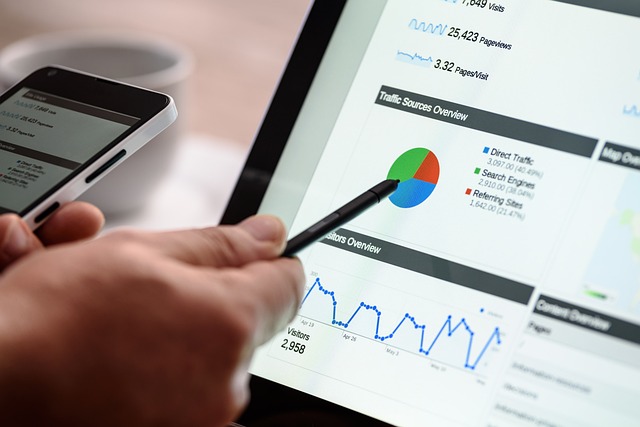AI ghost kitchen performance dashboards revolutionize food delivery logistics with automated order processing, real-time data tracking, and efficient inventory management. These tools minimize food waste by analyzing demand patterns, customer preferences, and preparation processes, leading to reduced overproduction and spoilage. Dashboard insights enable managers to optimize staffing, set waste reduction goals, and continuously improve resource utilization, fostering a culture of operational efficiency and environmental responsibility.
“In the rapidly evolving landscape of food delivery, AI ghost kitchens are revolutionizing culinary operations. This article delves into the strategies behind minimizing food waste in these efficient, yet complex systems. We explore the impact of AI on ghost kitchen management and present actionable insights. By implementing performance dashboards, operators can optimize waste reduction efforts. Through data-driven decisions, these tools enable effective AI-driven solutions, ensuring culinary scrap is minimized while resources are maximized.”
- Understanding AI Ghost Kitchen Systems and Their Impact on Food Waste
- The Role of Performance Dashboards in Optimizing Food Waste Reduction Strategies
- Practical Insights for Implementing Effective AI-Driven Solutions to Minimize Culinary Scrap
Understanding AI Ghost Kitchen Systems and Their Impact on Food Waste

AI ghost kitchens are a relatively new concept, leveraging advanced technologies to optimize food delivery logistics. These systems streamline operations by automating various tasks, from order processing and delivery routing to inventory management. By integrating artificial intelligence (AI) into kitchen workflows, ghost kitchens can enhance efficiency, reduce human errors, and improve overall performance. AI ghost kitchen performance dashboards offer real-time insights into key metrics, enabling operators to monitor productivity, optimize staffing levels, and identify areas for improvement.
The impact of these systems extends beyond operational enhancements, however. By meticulously tracking food preparation, packaging, and delivery processes, AI ghost kitchens can significantly mitigate food waste. Data-driven analysis allows operators to understand peak demand patterns, adjust inventory accordingly, and minimize surplus. Moreover, predictive analytics can forecast customer preferences, further reducing the likelihood of overproduction and spoilage. This holistic approach not only benefits the environment by minimizing food waste but also contributes to cost savings for ghost kitchen businesses.
The Role of Performance Dashboards in Optimizing Food Waste Reduction Strategies

In the realm of AI-driven ghost kitchens, performance dashboards serve as powerful tools for optimizing food waste reduction strategies. These digital interfaces provide real-time insights into kitchen operations, enabling efficient decision-making and resource management. By visualizing key metrics such as order volume, ingredient usage, and disposal rates, dashboards help identify areas where waste is prevalent. For instance, a ghost kitchen operator can quickly spot trends in over-ordering or underutilized ingredients, allowing them to adjust menu planning and purchasing accordingly.
AI ghost kitchen performance dashboards further facilitate the tracking of waste reduction goals and progress. They enable dynamic analysis of different strategies, such as optimizing recipe portions, implementing food donation programs, or refining supply chain logistics. With this granular level of data visibility, kitchen managers can pinpoint successful interventions and areas needing improvement, fostering a culture of continuous enhancement in food waste management.
Practical Insights for Implementing Effective AI-Driven Solutions to Minimize Culinary Scrap

Implementing AI-driven solutions in ghost kitchens can significantly minimize culinary scrap and enhance overall operational efficiency. The first step is to leverage AI for precise inventory management by analyzing historical sales data, ingredient lifespans, and menu items’ popularity. This enables kitchen managers to purchase ingredients optimally, reducing waste from overstocking or stockouts. Additionally, real-time monitoring of food preparation processes using computer vision can identify inefficiencies and ensure that dishes are prepared precisely, minimizing errors that lead to scraps.
AI ghost kitchen performance dashboards play a pivotal role here by providing visual, data-driven insights into scrap generation across various menu items and time periods. These dashboards enable managers to make informed decisions quickly, such as adjusting portion sizes, streamlining preparation workflows, or even tweaking recipes based on demand patterns. By integrating these AI solutions effectively, ghost kitchens can not only cut down on food waste but also improve their bottom line by maximizing resource utilization and minimizing operational costs.
AI ghost kitchen systems offer a promising solution to combat food waste, and leveraging performance dashboards is a strategic move towards this goal. By providing real-time data and insights, these dashboards enable efficient optimization of food preparation and ordering processes, ultimately reducing culinary scrap. Implementing AI-driven solutions, combined with the strategic use of performance metrics, can significantly contribute to more sustainable food waste reduction practices within ghost kitchen operations.
